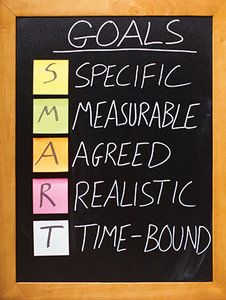You became a chiropractor to serve people, not an insurance company. You deserve to run a business that aligns with your values, supports your family and lights you up. Cash-based care isn’t just a pricing model – it’s a philosophy rooted in freedom, trust and respect for your patients and for yourself. Here's why - and how - to do it.
Designing a Fitness Plan (Part 1)
It doesn't matter if you come to my practice for pain relief, weight loss, healthy aging or something else. The formula I talk about for each patient's fitness strategy is pretty much the same. I want to know what they are doing to 1) build muscle; 2) get rid of excess fat around their middle; 3) strengthen bones; 4) boost lung capacity for better endurance; 5) improve their heart's pumping ability; and 6) improve balance and speed. To achieve these goals, patients need to know I am the doctor who creates a plan. Patients seem to like to hear, "I have a plan." If a patient is already exercising (yoga, sports, jogging, gym, etc.), I just like to make sure they are doing something for each of the six categories above. Patients who aren't exercising need to be taught fundamentals and I invite them (and you) to be guided along. I think I have a pretty good technique sequence I like to follow. It typically goes something like this...
The Plan: Overview

I assess range-of-motion restrictions, joints and soft tissues (ortho and neuro tests included). I apply mobilization / manipulation and release myofascial restrictions. I teach awareness exercises (posture, breathing) early on. I teach self-myofascial release approaches, such as foam roll and stick work. I teach patients self-stretch techniques. I teach low-load (body-weight, bands, balls, etc.) exercise techniques; then I teach whole-body exercise approaches using kettlebells and free weights. Discussion of therapeutic lifestyle changes is ongoing.
During the first clinician-patient meeting, as a rehab specialist we have a responsibility to do all of the following:
- Identify the rehab objectives (specific health or performance)
- Consider the patient's age and general condition
- Determine occupation and lifestyle details
- Consider the mechanism of injury / current limitations
- Ask the patient to describe the perceived exacerbations of pain and symptoms
- Ask the patient to describe the type of pain, its location, whether it's radiating, and specific dermatomes and myotomes
I also think it is important to perform provocative tests and functional movements, and provide some sort of self-"recheck." I am trying to get away from using the word homework when I prescribe corrective exercises. Instead, I ask the patient to frequently (throughout the day) perform a movement we identified as helpful and then "recheck" to see if it is improving.
The Plan: Specifics
When I talk to my patient about the "pain relief plan," I really tie everything together to create a "fitness game plan." I might say, "Let's get you more fit so you can age well" or "Let's make you're more durable for your next athletic event." Every effective fitness game plan needs:
- A resistance training element
- A cardiovascular training element
- A nutritional game plan
- Psychological recalibration
I am ecstatic if I can encourage my patient to do a little resistance training, a little cardio, improve their nutrition a little, and perform a little brain-train (including meditation, breathing, balance). For my general patient population (I tend toward a chronic pain practice), I think it is healthier (and easier) to immerse yourself in one, two or even three of the four fitness disciplines, rather than just one.
Here is a summary of a typical fitness plan I will offer a patient who presents with chronic low back pain, is overweight (and knows it), and is deconditioned:
- Goal: Reduce LBP and lose 10 lbs.
- Analyze the patient and provide treatment that includes mobilization / manipulation, shock-wave therapy, FAKTR, deep muscle stimulation, etc.
- Create in-office time to train the patient in what exercises to perform at home on their own (based upon their performance).
- Provide a prescription for future fitness sessions.
- Perform body composition analysis, and recommend diet and nutrition that is leveraged to achieve weekly fat-loss goals.
- Establish a time frame; for example, three months. The big goal is subdivided into small weekly increments.
- Establish weekly mini-goals; if each weekly mini-goal is attained, we eventually end up at the predetermined overall goal.
- Continually issue "report cards" via assessments to keep the patient motivated and on track.
Each new-patient encounter includes asking the patient not only about their history, but also their own thoughts, feelings and beliefs regarding the pain or problem. It's important to me to know the outcome the patient wants, and what's really significant and worth pursuing. That process helps clarify the successful course of treatment. Then it's up to them! I become the teacher and the patient has the ultimate responsibility for their fitness plan.



